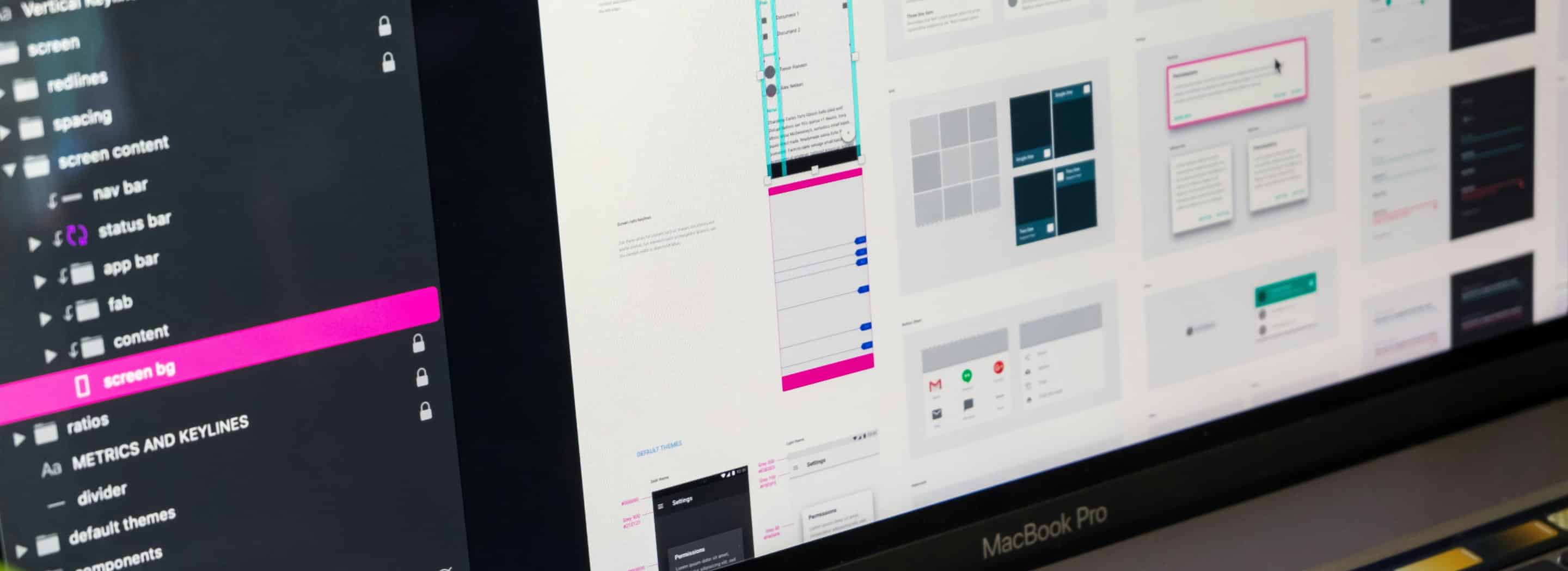Seamless Integration in Automation QA: Optimizing UX Testing in Automation Workflows
Stay ahead in secure automation testing with the latest insights:
- Grasp the critical role of security in automation testing and understand its potential risks.
- Identify and analyze common security vulnerabilities in automation testing environments.
- Learn effective methods to implement and enforce robust security measures.
- Review and select the best tools and technologies for secure automation testing.
- Integrate and benefit from secure testing practices throughout the software development lifecycle.
- Keep updated with emerging trends and advancements in secure automation testing.
- Assess and enhance the effectiveness of your security measures in automation testing.

Table of Contents
Table of Contents
Understanding the importance of security in automation testing
In automation testing, the integration of robust security measures is crucial. This importance stems from the need to protect sensitive data and maintain software integrity. As automation increasingly permeates various aspects of software development, the potential impact of security flaws becomes more significant. These risks can lead to severe consequences, including data breaches and operational disruptions, underscoring the need for a thorough understanding and implementation of security protocols in the testing process.
Potential risks and impacts of security flaws
Security concerns in automation testing are diverse and significant, ranging from data breaches to compromised testing environments. These issues highlight the critical need for vigilant security practices:
- Data breaches: Unauthorized access to sensitive data can lead to significant privacy and financial implications.
- Code injection attacks: Such attacks can corrupt the software, leading to operational failures and loss of trust.
- Compromised test environments: Vulnerabilities in test setups can undermine the reliability of testing outcomes.
Ignoring these risks can result in damaging consequences, making security a top priority in automation testing strategies.
Identifying common security risks in automation testing
Recognizing and understanding common security risks in automation testing is a critical step towards ensuring robust testing processes. Automation testing, while streamlining QA workflows, can also expose systems to specific vulnerabilities that need careful attention. These vulnerabilities, if overlooked, can lead to severe consequences, undermining the integrity of the software and the security of user data. A comprehensive analysis of these risks not only helps in safeguarding the testing process but also contributes to the overall security posture of the software being developed.
Common security vulnerabilities in automation testing
Some of the frequent security vulnerabilities encountered in automation testing include:
- Inadequate access controls: Weak access controls can lead to unauthorized access to testing tools and data.
- Unsecured test data: Use of real data in testing environments without proper security measures can expose sensitive information.
- Insufficient encryption: Lack of strong encryption protocols can make test data vulnerable during transmission.
- Flaws in test scripts: Poorly written test scripts can open up security loopholes in the software.
Identifying and addressing these vulnerabilities is essential for maintaining the security integrity of the automation testing process.
Selecting tools and technologies for secure automation testing
Selecting the right tools and technologies is vital for ensuring security in automation testing. The choice of tools can significantly influence the effectiveness of security measures within the testing process. In today’s fast-evolving tech landscape, QA teams must choose tools that not only align with their testing requirements but also adhere to stringent security standards. These tools should offer robust security features to protect against vulnerabilities and enhance the overall security posture of the testing process. A careful review of these tools’ features and capabilities is crucial in making an informed decision that ensures both efficient testing and stringent security.
Recommended tools for secure automation testing
When selecting tools for secure automation testing, consider these options:
- Tool A: Known for its advanced encryption features and strong access control mechanisms.
- Tool B: Offers comprehensive security auditing capabilities and regular updates for vulnerability patches.
- Tool C: Provides robust data protection features, ideal for handling sensitive test data.
Choosing the right tools is a critical step in enhancing the security framework of automation testing processes.
Selecting tools and technologies for secure automation testing
Securing the automation testing process is heavily dependent on the tools and technologies employed. The right selection can provide a robust defense against potential security threats. In the current technological landscape, where security breaches are increasingly sophisticated, it’s crucial for QA teams to choose tools that not only meet their testing requirements but also encompass advanced security features. This selection process involves a thorough evaluation of tool capabilities, focusing on aspects such as data encryption, access controls, and compliance with security standards. By prioritizing security in tool selection, organizations can significantly fortify their automation testing framework against vulnerabilities.
Evaluating and choosing secure testing tools
A critical examination of tool features for secure automation testing should include:
- Data Encryption and Protection: Tools should offer strong encryption methods to secure test data, especially when handling sensitive information.
- Access Control Mechanisms: Robust access control features are essential to ensure that only authorized personnel can access the testing tools and data.
- Compliance with Security Standards: Tools should adhere to recognized security standards and regulations to ensure compliance and safeguard against legal and operational risks.
- Regular Security Updates: The ability of the tool to receive regular updates for security patches and vulnerability fixes is critical to maintain ongoing protection.
- Integration with Existing Systems: Ensure that the tools can seamlessly integrate with existing security systems and workflows without creating new vulnerabilities.
The proper selection of tools and technologies for secure automation testing is a cornerstone in building a resilient and reliable QA process. This decision not only impacts the effectiveness of testing but also plays a crucial role in maintaining the overall security integrity of the software development lifecycle.
Integrating secure testing in the software development lifecycle
Integrating secure testing practices into the software development lifecycle (SDLC) is essential for the overall security and reliability of software products. This integration is not just about adding security checks but involves a holistic approach to embed security within every phase of the SDLC. By doing so, potential security vulnerabilities can be identified and mitigated early, reducing the risk of costly and damaging breaches post-deployment. It also cultivates a culture where security is a shared responsibility among all team members, not just a concern for the security specialists.
Strategies for incorporating secure testing in SDLC
To effectively integrate secure testing within the SDLC, consider these strategies:
- Security-First Approach in Design: Prioritizing security considerations during the design phase to ensure the architecture is robust against potential threats.
- Regular Security Training: Conducting ongoing training sessions for developers and testers to stay updated on the latest security threats and best practices.
- Security Audits and Reviews: Implementing regular security audits and code reviews throughout the development process to identify vulnerabilities early.
- Automated Security Testing Tools: Utilizing automated tools to continuously scan for and address security vulnerabilities.
- Stakeholder Collaboration: Encouraging collaboration between development, testing, and security teams to create a unified approach to security.
Incorporating these strategies ensures that secure testing is an integral part of the development process, leading to the creation of more secure and reliable software solutions.
Keeping abreast of emerging trends in secure automation testing
Staying updated with emerging trends in secure automation testing is essential for organizations to maintain effective and up-to-date security practices. The field of automation testing is constantly evolving, with new threats and technologies emerging regularly. By keeping informed of these trends, QA teams can adapt their strategies to counteract new security challenges and leverage innovative tools for enhanced protection. This proactive approach not only safeguards the testing process but also contributes to the overall security of the software development lifecycle.
Latest trends in secure automation testing
Key trends in secure automation testing include:
- Adoption of AI and Machine Learning: Leveraging AI to predict and identify security vulnerabilities more efficiently.
- Increased Focus on DevSecOps: Integrating security practices deeply within DevOps methodologies.
- Enhanced Cloud Security Measures: Strengthening security protocols in cloud-based testing environments.
Understanding and adapting to these trends enables organizations to stay ahead in the dynamic field of secure automation testing, ensuring robust security in their software products.
Assessing the effectiveness of security measures in automation testing
Evaluating the effectiveness of implemented security measures in automation testing is crucial for ensuring the robustness of these measures. It involves a thorough assessment of how well the security protocols perform under various scenarios and their impact on the overall security of the testing process. This evaluation not only helps in validating the security strategies in place but also in identifying areas for improvement. Regular assessment of security measures is key to maintaining a high standard of security in automation testing and adapting to evolving threats and technologies.
Methods for evaluating security effectiveness
To effectively assess security measures in automation testing, consider the following methods:
- Security Testing Metrics: Utilize metrics such as the number of security breaches detected, time taken to identify vulnerabilities, and time to resolve security issues.
- Regular Security Audits: Conduct comprehensive security audits to identify weaknesses and validate the effectiveness of current security measures.
- User Feedback: Gather feedback from testers and developers on the usability and effectiveness of security protocols in the testing process.
Implementing these assessment methods ensures continuous improvement and effectiveness of security measures in automation testing environments.
FAQ: Security in Automation Testing Q&A
Maintaining security in automation testing is paramount. Secure automation testing is fundamental in identifying vulnerabilities at an early stage, helping in the prevention of potential security breaches and unauthorized access, which, in turn, safeguards user information and system integrity. A focus on security is not only essential for user trust and data protection but also crucial in complying with various regulatory requirements, avoiding legal repercussions. Without proper security measures in place, the product and the organization could suffer severe reputational and financial damage. Therefore, organizations need to prioritize security in their automation testing to ensure the delivery of safe, secure, and high-quality software.
Automation testing can unearth several security risks, with some of the most common ones being injection flaws, broken authentication, and data exposure vulnerabilities. Injection flaws occur when untrusted data is sent to an interpreter through a command or query. Broken authentication, on the other hand, happens when application functions related to authentication and session management are implemented incorrectly, allowing attackers to compromise passwords or keys. Data exposure vulnerabilities are risks that occur when sensitive data is exposed due to inadequate encryption or other flaws in security. These vulnerabilities, if left unaddressed, can lead to serious consequences including data breaches and unauthorized access to sensitive information.
To effectively mitigate security risks in automation testing, organizations must adopt a multi-faceted approach. This involves incorporating secure coding practices from the onset of the project, utilizing robust encryption methods for sensitive data, and conducting regular and comprehensive security assessments. It’s also essential to select automation testing tools that come with enhanced security features to identify and address vulnerabilities effectively. Continuous training and awareness programs for the development and testing teams are equally crucial, ensuring that they are updated on the latest security threats and mitigation strategies. Lastly, staying abreast of emerging security trends and integrating the latest security technologies can help in fortifying the software against evolving threats.
Several tools excel in secure automation testing, with OWASP ZAP, Veracode, and Fortify being highly recommended due to their extensive security analysis capabilities. OWASP ZAP is particularly notable for its automated scanners and various tools that help testers identify security vulnerabilities in web applications during the development process. Veracode offers cloud-based services to scan for security threats in the software’s binary code, making it an excellent tool for identifying hard-to-find vulnerabilities. Fortify, on the other hand, provides end-to-end solutions for agile, waterfall, and hybrid software development approaches, ensuring comprehensive identification and management of security risks. Selecting the right tool depends on the specific requirements and context of the project.



